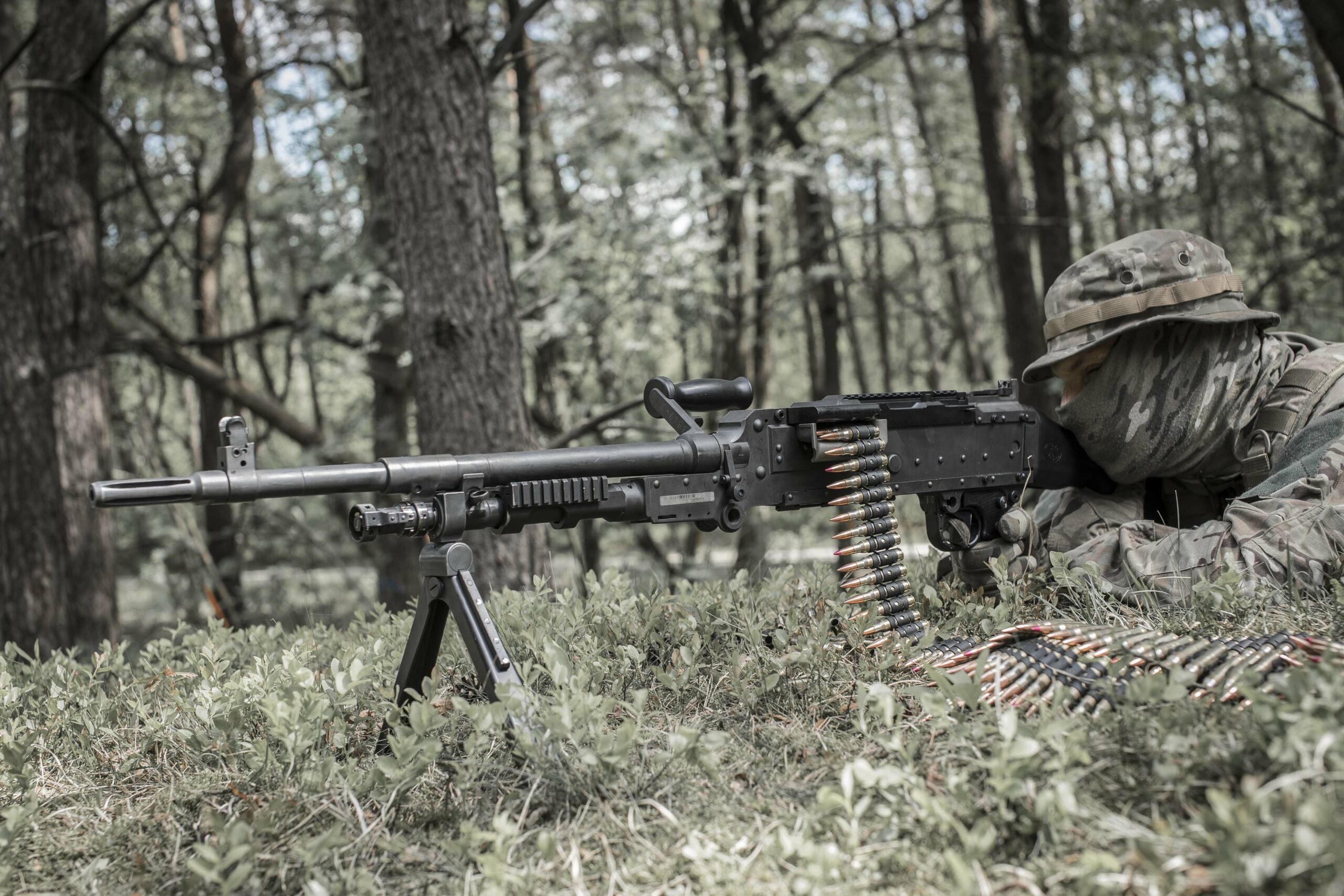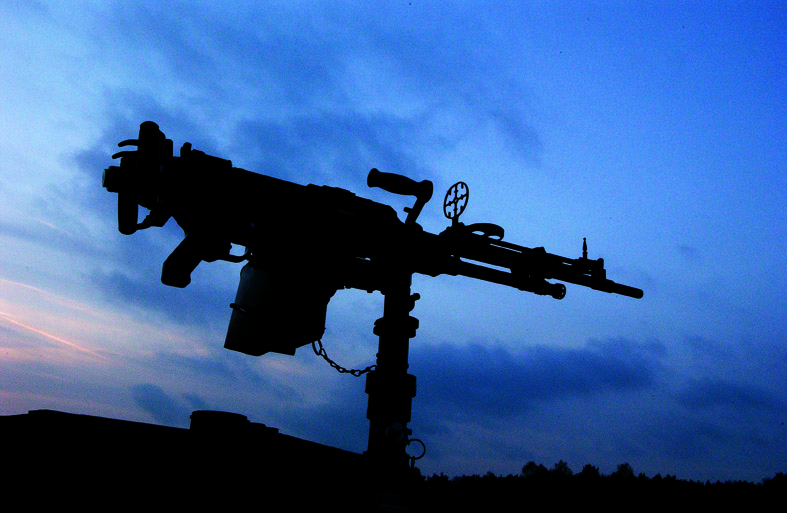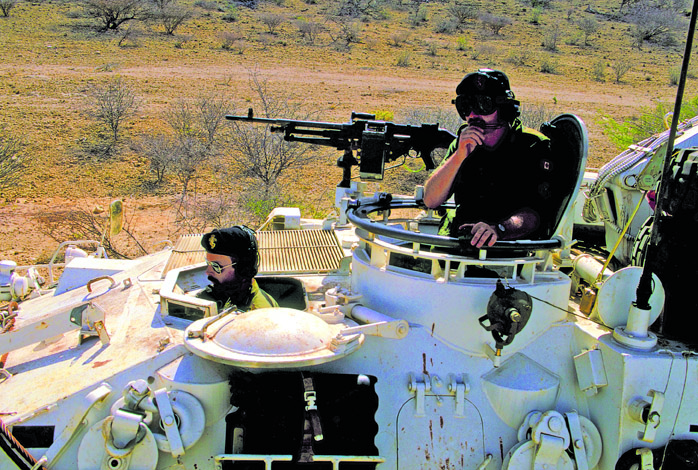The FN MAG® machine gun, adopted by more than 90 countries, is one of very few weapons that has achieved legendary status. Under many different names; MAG 58, Ksp 58, L7A2, GPMG, MMG, C6, M240, and others. It has served in almost every conflict of the past 60 years. To put its age into context, 1910 variants of the Maxim gun, the first fully automatic machine gun designed in 1884, are being used in Ukraine. However, the FN MAG® is not a relic pressed into emergency service, it is the 7.62x51mm calibre weapon of choice to equip latest-generation multi-million-dollar vehicles and helicopters for the world’s most technologically advanced military forces. Why? Simply because it carries out its many missions perfectly, inspiring total user confidence, and nothing else comes even close to equalling it.

The Second World War was the largest test laboratory that has ever existed for combat tactics and weapons from many countries in every possible climatic condition and terrain. After the war maps were redrawn, new alliances formed, and the military lessons and technologies were evaluated, from the atom bomb to small arms. As peace returned FN Herstal rebuilt its severely damaged production site, the workforce was regenerated, design engineers who had worked in exile returned, and the company prepared for the future.
FN Herstal already had decades of experience making Browning designed .50 Cal and .30 Cal machine guns and the Browning Automatic Rifle (BAR). As the FN design team headed by Ernest Vervier started to work on a General Purpose Machine Gun (GPMG), a concept that had gained universal acceptance, it studied what had already proved to be most effective. The resulting design, the Mitrailleuse À Gaz (gas operated machine gun), took the best features from several earlier weapons and combined them with original design work. These were the building blocks, the DNA, that came together to create a truly outstanding weapon.
The FN MAG® is a 7.62x51mm calibre machine gun with belt feed. Most use NATO M13 disintegrating links, though some were made to feed the German DM1 non-disintegrating belt. The receiver is made of steel plates riveted together, making it rigid and exceptionally robust. The quick-change barrel locks tightly into the receiver for improved accuracy and is fitted with a gas regulator that allows the rate of fire to be adapted to ensure optimal performance even in adverse conditions and very intensive firing. The gas operated mechanism has a fixed long-stroke piston, and locks into the receiver using a tilting locking lever. The weapon fires from an open bolt to avoid the risk of a “cook-off” created by a round remaining in the chamber of a hot barrel being ignited as the powder heats up. The trigger mechanism gives full auto fire only and has a cross-bolt safety.

First adopted by Sweden in 1958 as the Ksp58 in 6.5mm calibre, all other FN MAG®s were made in the recently adopted 7.62x51mm NATO calibre. The British army which had been testing the FN MAG® before it went into production officially adopted it in 1961 as the L7 series GPMG, and licensed UK production started in 1963. This gave the FN MAG® a boost, and it was soon being adopted worldwide. Its exemplary performance in combat brought universal admiration from users, building its reputation.
Being a GPMG the FN MAG® filled the light and medium machine gun roles, so it was adapted for use internally (coaxial) and externally (pintle) on vehicles, ships, boats, and helicopters. This led to a vast number of configurations (at one time over 130), some versions being adapted to one specific vehicle. Apart from the receiver and the moving parts almost all assemblies had variant configurations. There were versions with solenoid remote firing systems, with a cable in place of the cocking handle, with the butt replaced by spade grips or just a rear block, left or right-hand feed mechanisms, gas regulators that avoid releasing gas into the vehicle, and many more.
The FN MAG® was not alone on the GPMG market, but it quickly gained the reputation of being the best. Unlike its competitors the FN MAG® had a receiver made from machined steel plates, making it far more robust, with a longer life and more accurate. Other weapons with sheet metal receivers were lighter but not as robust, reliable or accurate, making them less suitable for medium machine gun roles. Even for the infantry role the extra weight was accepted by users who carried it in combat, their attitude was “I don’t mind the weight because I can totally depend on it when the shooting starts”.
In the mid 1970’s the US Army was developing new armoured vehicles that became the M1 Abrams tank and the M2 Bradley Infantry Fighting Vehicle. At the same time, they had decided to abandon the very unreliable M73/219 vehicle machine gun. A program to select a replacement was started. After very rigorous comparative testing the FN MAG® not only won, but crushed all competitors, achieving the highest results for reliability ever given by a machine gun in US army tests. The FN MAG® was adopted as the M240 coaxial machine gun. FN Herstal set up a manufacturing facility in South Carolina to produce the M240 and the M249 (FN MINIMI® 5.56) for the US market. Its superb performance in vehicles so impressed the US military that the role of the M240 expanded to also fill infantry, ship and aircraft applications in several configurations, becoming the standard 7.62x51mm machine gun in US Armed forces. These versions are produced by FN in the US for US customers and evolve to meet specific US requirements.
Meanwhile the FN MAG® continued on its path to domination of the world market. The introduction of the FN MINIMI® light machine gun, first in 5.56x45mm then in 7.62x51mm led to some countries going back to having separate weapons for the light and medium machine gun roles. The FN MAG® has become the world standard in 7.62 NATO calibre medium machine guns and is still winning new markets. It is currently produced by FN in three different sites: FN Herstal in Belgium, FN UK in Great Britain, and FN America in the USA. Fired from the bipod, tripod, coaxial vehicle mounts, pintle mounts on vehicles, helicopters, ships or boats and remotely operated weapon stations, used by Army, Navy, Airforce, Marines, Special Forces, Coastguard, Security Force units on all continents, the FN MAG® is the ultimate post-WW2 machine gun design.

Although designed over 60 years ago the FN MAG® remains fully up to date. Upgrades have regularly been introduced, mainly on external features, such as replacement of the wood buttstock with a polymer version or added top and side rails. FN Herstal has always taken care to limit loss of compatibility of parts or assemblies between generations, so guns that have been in service for decades can still be maintained.
With its excellent and regularly updated design, manufactured to the highest quality standards, and backed by 360-degree service, the FN MAG® is set to continue serving the world’s most demanding combat forces for decades to come.
Learn more about its unmatched performance and discover why it remains the preferred choice for military forces worldwide. Visit the FN MAG® product page to explore its features and capabilities.